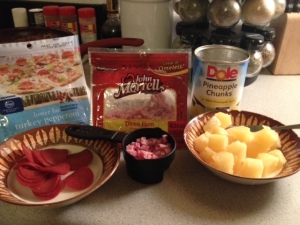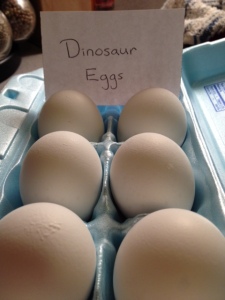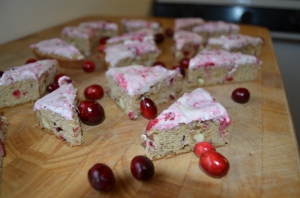What are Macronutrients (macros)?
What if I said that you could burn fat and/or build muscle by eating whatever foods you wanted? Think I’m lying? Well, I’m not! In fact, it’s possible by learning the science and truth about human nutrition. Regardless of what you’ve read in the muscle and health magazines, the truth is your body doesn’t know the names of the foods you eat. Your body only “sees” foods as macronutrients and energy (calories).
So you are probably asking yourself, what are macronutrients? Macronutrients are simply the nutrients that provide the body with energy in the form of calories. In foods, there are 3 different macronutrients and each have their own importance and personalized function for the body. The 3 macronutrients found in foods are proteins, fats and carbohydrates. Now that you know what macros are, lets take a look at each individual macronutrient briefly and learn how they can help you achieve that dream body of yours.
*Throughout this post, we will use a 150lb individual (Can be male or female) as our reference. This individual burns around 2,800 calories per day and has a goal to burn fat and lose weight.
-
Proteins: Essential nutrients that provide 4 calories per gram. Proteins are the building blocks of muscle tissues and help to repair any damaged tissues in the body.
-
-What foods are good sources of protein?
-How much protein should I eat daily? This is a question that has been heavily disputed over the past several years. Protein requirements vary depending on a person’s individual goals, I personally recommend around .5-1g of protein per pound of bodyweight based on the current research. For example, our 150lb individual should aim to get around 75-150g of protein every day (150lbs x .5g=75g and 150lbs x 1g=150g of protein). If you are a person who is involved with bodybuilding and resistance training, the upper range is what you should aim for on a daily basis.
*So, if this person consumes 150g of protein a day, how many calories does that equal? (Remember proteins contain 4 calories per gram) -So with a simple multiplication problem: 150g of protein x 4 calories per gram = 600 calories from protein
-
Fats: Essential nutrients that provide 9 calories per gram. Fats help to insulate organs, regulate inflammation, produce hormones, and provide energy for low to moderate intensity exercises.
-What foods are good sources of fat?
-
Nuts and nut butters
-
Fish
-
Oils (Olive, canola, coconut, etc.)
-
Seeds (Flax, pumpkin, sunflower, etc.)
-
Sweets (Cakes, pastries, etc.)
-How much fat should I eat daily? Like the other macronutrients, the amount of fat should be determined on an individual basis. A good target for fat is around .45-.5g of fat per pound of body weight. Using our 150lb individual, this would be around 67.5-75g of fat everyday. (150lbs x .45g=67.5g and 150lbs x .5g=75g of fat)
*So, if this person consumes 75g of fat a day, how many calories does that equal? (Remember fats contain 9 calories per gram) -75g of fat x 9 calories per gram = 675 calories from fat
3. Carbohydrates: Nonessential nutrients that, like proteins, provide 4 calories per gram. Carbohydrates are an excellent source of energy especially during high intensity activities. Carbs also help minimize your body from using proteins as a fuel source.
-What foods are good sources of carbohydrates?
-
Grains (breads, pastas, rice, oats, cereals, etc.)
-
Fruits and Vegetables
-
Dairy products
-
Sweets (Cakes, pastries, etc.) and sugars
-How many carbs should I eat daily? Depending on a person’s activity level, the amount of carbs a person should consume can vary day by day. On days where you are more active and your body requires more energy, your carbohydrate intake should increase; and on days you are less active, your carb intake can be slightly lower. Since carbs are not essential nutrients like proteins and fats (meaning your body does not “need” to obtain energy via carbohydrates through the diet), I like to calculate carb needs last. Pending on your activity level, a carb range of 1-3g of carbs per pound of body weight is usually a good range to achieve your fitness goals. So the carb needs of our 150lb individual can vary from 150g-450g of carbs per day (150lbs x 1g=150g and 150lbs x 3g=450g of carbs).
*So, if this person consumes 300g of carbs a day, how many calories does that equal? (Remember, carbs contain 4 calories per gram-like proteins!) -300g of carbs x 4 calories per gram =1,200 calories from carbs
Bringing it all together
Now that we have determined the macronutrient intake for our 150lb individual to be 150g of protein, 75g of fat, and 300g of carbs daily, we can calculate how many calories this adds up to:
150g of protein = 600 calories (150g x 4cal per gram)
75g of fat = 675 calories (75g x 9cal per gram)
300g of carbs = 1,200 calories (300g x 4cal per gram)
*Total Calories: 600+675+1,200 calories = 2,475 calories per day
If you recall at the beginning of this post, our 150lb individual burns around 2,800 total calories per day. So, if he consumes 2,475 calories with the macros of 150/75/300 (protein/fat/carb), he will be able to achieve his goal of both weight loss and fat loss because he is in a calorie deficit:
-2,475 calories consumed – 2,800 calories burnt = -325 calorie deficit
Since this individual is burning 325 more calories than what is being consumed through the diet, the individual is in a calorie deficit, which will promote both fat loss and weight loss.
*Note, that the most important aspect of body composition goals is to hit your target macronutrients for the day and to not worry about what specific foods to eat or avoid. It is of course important to eat a wide variety of foods through including whole grains, fruits, veggies, lean meats and lean dairy products. However, if you want to eat some ice cream and can fit it into your macronutrient goals for the day, eat the ice cream! Yes, you can still lose weight by eating ice cream if your macronutrient goals put you in a calorie deficit for the day.
Hope this post helps you out and if you have any questions, ask away!



















